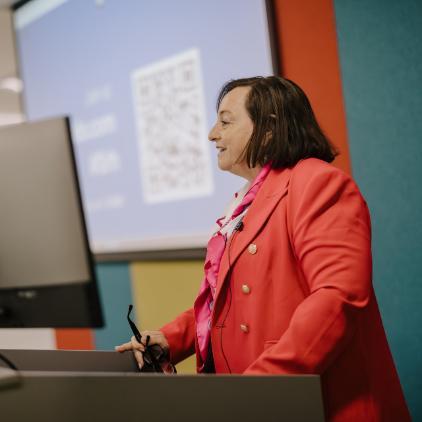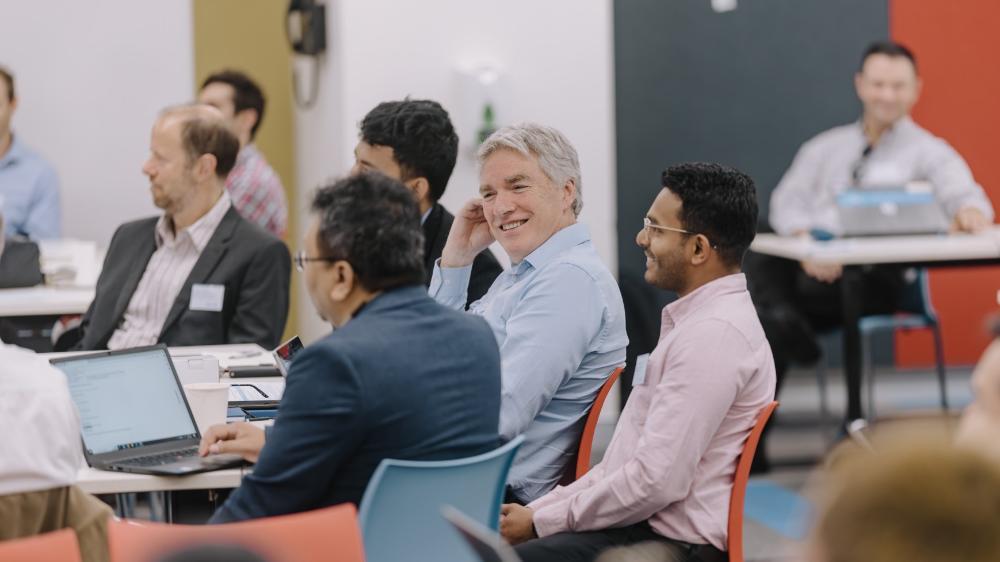February 13, 2024
Steel Research Hub Symposium asks, “where to next?”
Two-day symposium brought industry and academia together to provide a snapshot of steel manufacturing in Australia
The University of Wollongong-based Steel Research Hub held its second annual symposium last week (7-8 February). The gathering brought together more than 90 members of the Australian steel innovation community including major industry and university partners.
The overarching theme of the event - Collaboration, Engagement, and Cohesiveness – prompted the sharing of research and development highlights across four major programs of study: Process Integration and Sustainability; Product Innovation and Technology; Advance Corrosion Performance and Operational Efficiency; and Steel Supply Chain Transformation. Afternoon technical sessions included PhD candidates presenting their research.
Vice Chancellor and President Professor Patricia M. Davidson welcomed attendees to the symposium and provided insights on UOW’s longstanding engagement with the Illawarra steel industry and the need for future innovation in low-emission steelmaking, digitalisation and workforce training.

“I am proud of the Steel Research Hub for helping to springboard Australia’s most capable academic expertise into innovative solutions and breakthroughs in steel products and manufacturing. It symbolises our commitment to a ‘triple bottom line’ perspective, where we not only aim for economic success but also prioritise ecological and social impact.
“Strong professional relationships are critical to achieving great outcomes. In recent years, the relationship between Australian universities and the steel industry has developed significantly. The Steel Research Hub is a wonderful example of one such impactful collaboration. Here we have a research ecosystem of nine universities and 10 industry and peak body partners brought together to help find solutions to the economic, ecological, and social/workforce challenges of today.”
Following Professor Davidson’s address, a panel of industry and academic leaders held an open forum titled “Where to Next in Australia Steel Innovation” to look at the future, beyond the current Steel Research Hub.
The panel included Steel Hub advisors David Varcoe, National Manufacturing Advisor at the Australian Steel Institute; Jason Hodges, Open Innovation and Intellectual Property Manager at BlueScope; Bradley Taylor, Director of Technical at InfraBuild Wire, Professor Geoffrey Brooks from Swinburne University; Mohsen Saeedikhanigeraei, Steel Research Fellow at Deakin University; and Durga Tandon, Steel Hub PhD candidate at UOW
The panel addressed several important national steel issues including pivotal areas for innovation, key research capabilities required and technological training and diversity of the future steel manufacturing workforce.
Dr Paul Zulli, Director of the Steel Research Hub said, “Over the seven years of operation, both rounds of the Steel Research Hub have been a wonderful breeding ground for world-leading innovation and training in steel manufacturing, with an extensive portfolio of transformative research developed in collaboration with each partner, closely aligned with their future business strategies.
“The hub’s value proposition is clear - to ensure competitiveness of the national industry through efficiency and process transformations in steel manufacturing while increasing sales in new, high-value steel product segments.
“So, with the second round of the Steel Research Hub now well underway, the Australian steel industry sees a timely opportunity to consider what the next steps are and to use this collaborative platform as a springboard for future steel innovation. In this way, the Steel Research Hub will continue to harness Australia’s most capable academic expertise in core research and deliver innovative solutions and breakthroughs in steel products and manufacturing that focus on strategic outcomes that are not independently realisable.”
